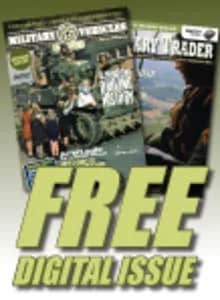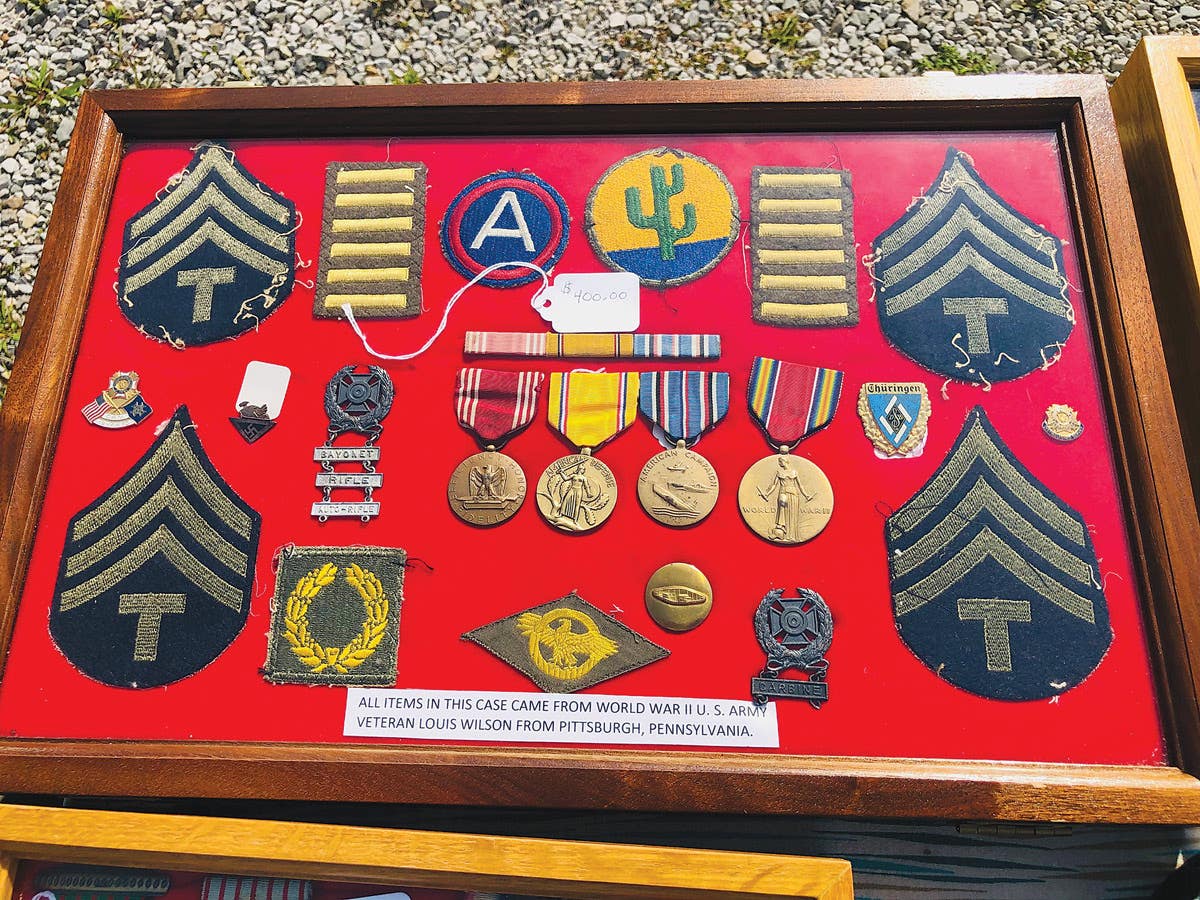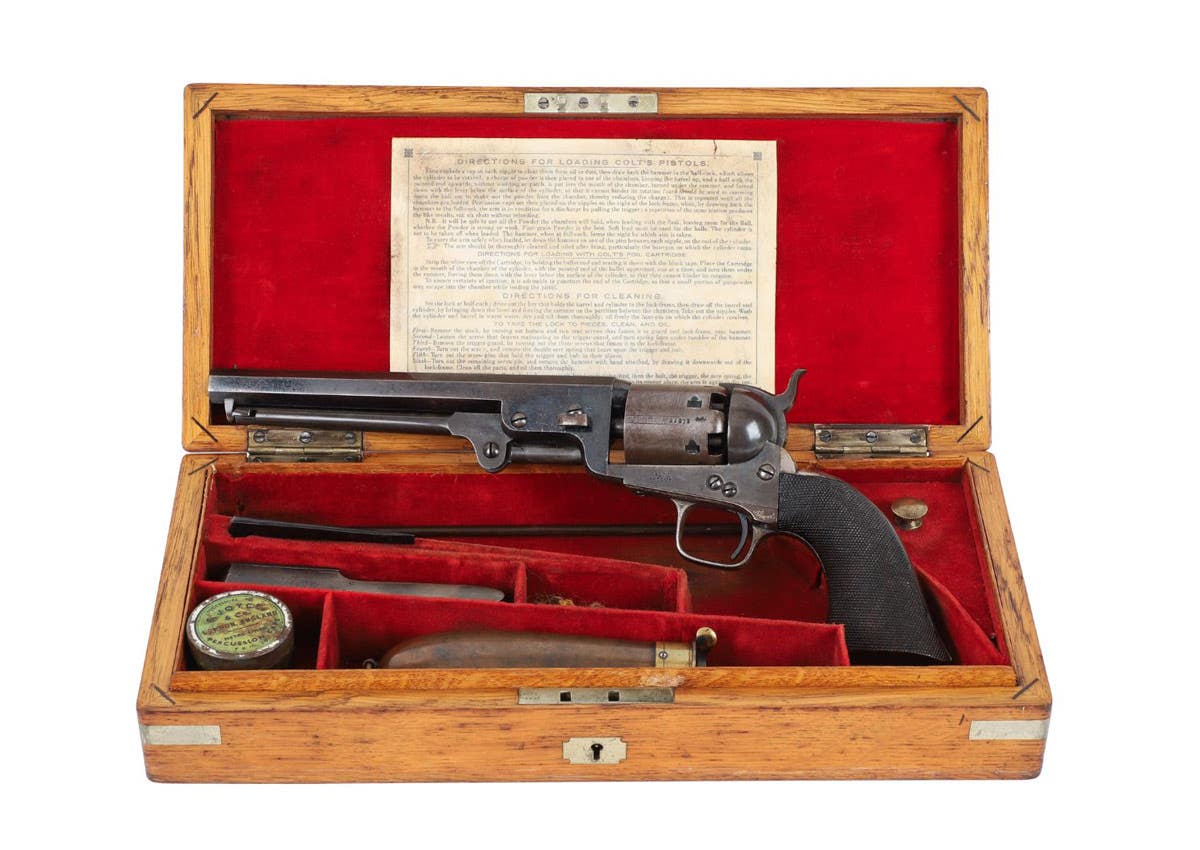The glorious chaos of collecting Militaria
“Every passion borders on the chaotic, but the collector’s passion borders on the chaos of memories,” wrote German-Jewish philosopher and cultural critic Walter Benjamin. Collecting Militaria
“Every passion borders on the chaotic, but the collector’s passion borders on the chaos of memories,” wrote German-Jewish philosopher and cultural critic Walter Benjamin. He didn’t name any specific type of collector, but it is hard not to see the passion of those in the military collectible world and the chaos that comes with it.
Every show I’ve ever attended over the past 40-plus years has in some way bordered on the chaotic, while those years are certainly a chaos of memories. I’m probably not alone in saying this, but for all the research I’ve done, I don’t know when I first learned the model numbers for German helmets. Reading books by Terry Goodapple, Floyd Tubbs, and Ludwig Baer offered fresh insight, but in each case, much of it was already familiar in my mind.
When did I “learn” the British “Tommy” helmet was designated the Mk I, not to be confused with a Brodie, which was really the experimental pattern on which the Mk I was based? When did I first know that the German submachine gun was called a “Schmeisser” but that Hugo Schmeisser didn’t design the firearm officially known as Maschinenpistole 40 or MP-40? I seem to have been born knowing that the Messerschmitt Bf 109 was commonly called the Me 109, but that it wasn’t its official model designation.
Is the chaos of military history something we learn like walking or talking?
That might be true for a few youngsters who grew up in the world of military collectibles, but I didn’t go to my first show until I was 12 years old. Yet, somehow I seemed to already know it was Bf 109 not Me 109, so maybe I’m simply wired to gather this insight.
I never forget a face, but don’t ask me when we met
For the record, I believe I have an exceptional memory. It isn’t an “eidetic memory,” sometimes known as “photographic memory,” as that focuses on the recall of visual details. Rather, I have traits of hyperthymesia, also known as highly superior autobiographical memory (HSAM), which refers to an extraordinary ability to recall a vast amount of autobiographical information. I can remember when and where I bought certain items, what I paid for them, and even who I bought them from. Yet, there is one notable exception to my memories.
For the life of me, I can’t remember meeting people whom I seem to have simply known forever.
As an example, I can remember that I bought a Belgian M15 “Adrian” helmet from Jeff Shrader of Advanced Guard Militaria in 2005, and that Jeff said to pay his wife Anna, who was collecting the money. I know I flew home later that evening with the helmet in my carry-on bag. I also know I had met Jeff and Anna sometime before, and that at SOS, we had a nice chat about the state of the world. For the life of me, however, I can’t tell you when or where we met. Was it the MAX show a few years earlier? I just don’t know at this point, and I’ve racked my brain thinking about it while writing this piece.
Children don’t remember meeting their parents or older siblings, and as they age, they just “know” who those people are. The same now holds true for so many people I now count as close and dear friends. In other words, Jeff and Anna are like those cousins you only see at the holidays, but have also known forever. I don’t think I’m alone in this. The military collectible world is fairly small after all, and if you attend a few shows annually, you’ll see familiar faces.
Thus often times, we’re never formally introduced. Instead, it is like a classroom as children. We have a conversation one year after another and, before we know it, we’ve gone from acquaintances to friends. Perhaps we chaotically make friends with those who share similar interests.
Organizing chaos: collecting books
Part of collecting is also about fighting the chaos. While collections are often broken up and sold off, as collectors, we simply seek to “complete” something. That can be putting together a mannequin display, which can require getting every piece of equipment the soldier may have been issued. Other times, it is having every rifle used by the combat nations in a particular conflict or gathering all of the orders and decorations that were awarded.
A side collection of mine is books.
The chaos of memories is trying to remember if I have that particular Osprey book, that helmet book, or that obscure uniform book. A friend suggested I should keep a list, but that would look like the old phone books that kids today most certainly don’t remember. My wife jokes that it would be easier to write down what books I don’t have! There is some truth in that statement. More than once, I’ve come home with a book to find it is already on the shelf, and I’ve already read it cover to cover.
Collecting books has even resulted in a different kind of chaos for me. Not in where I put the books, but in how I organize them. As a collector, I have them in various categories. Where the pandemonium ensues is in how to determine what goes on the shelves of African history and warfare, versus what is British military history, and what fits into my collection of books on colonialism and imperialism of the 19th century. The books on Shaka Zulu, for example, don’t seem to fit into the latter categories, while The Washing of the Spears obviously would fall into African and British military history. But does my shelf of books on the Anglo-Boer Wars fit with colonialism and imperialism? Call those collectors’ problems.
Suffice it to say at least a few times a year I do hear my wife Enid say, “Are you moving books again?”
The answer is yes, I’m battling the chaos. And for the record, I very much remember when and where I met her!
Looking for more from Peter Suciu? Here are a few more articles for your reading enjoyment.
Peter Suciu is a freelance journalist and when he isn't writing about militaria you can find him covering topics such as cybersecurity, social media and streaming TV services for Forbes, TechNewsWorld and ClearanceJobs. He is the author of several books on military hats and helmets including the 2019 title, A Gallery of Military Headdress. Email him and he'd happily sell you a copy!







